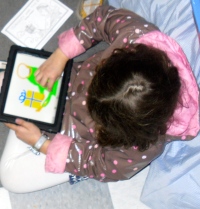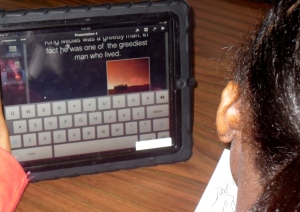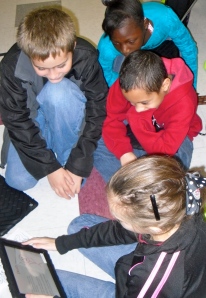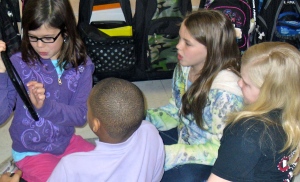CCSS.ELA-Literacy.RL.4.4 Determine the meaning of words and phrases as they are used in a text, including those that allude to significant characters found in mythology (e.g., Herculean).
I looked up and the time was 6:00. My husband would be leaving his office soon, but where was I? That’s right, in the classroom. I was scouring the internet looking for appropriate, engaging, and on-level text about Greek Mythology. Common Core states that the students must be able to “allude to significant characters found in mythology”, so that means I need to give them those experiences. Unfortunately, I just could not find what I was looking for. The text that was challenging enough was not appropriate, the videos and media displayed works of art that I blushed looking at, and everything that was appropriate was near a kindergarten level. Luckily, I had bought some mini-books last year on Greek Mythology, so I thought if I could not find all of the media and text, I would use the mini-books to build upon my Greek Mythology unit.
After introducing Greek Mythology and the origin story of “how it all began”, I was hit with all of the questions and comments, “did people really believe this?”, “How could Cronos eat his children?”, and “Mrs. B, this is ridiculous.” My class became so intrigued with the idea that people actually believed these stories that they couldn’t wait to hear more! On the next day, my class read the story of Demeter and Persephone and answered text based questions independently. Little did they know our week was only getting started!
When Wednesday morning hit, I was really excited and nervous about what laid before us. As a class, we created a flow map based on the myth about Demeter and Persephone. Then, I got the kids started in a jigsaw with four Greek Mythology stories. With 26 students in class, I had four groups. My students’ goals in this group were to popcorn read the myth and create a flow map with the five most significant events that happened in the story. Next, each group member needed to create a Keynote on their IPad that taught the story and highlighted the five most important events. I. was. AMAZED. There was not any arguing, all of the students were on task, and all of the students were participating. When I visited a group in which the current reader struggled with a word, the students around him supported him and gave him the unfamiliar word.
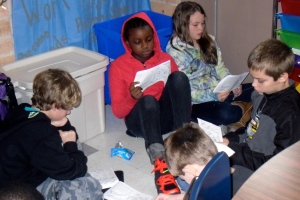 It was wonderful to see the students discussing the plot and which points were the most important. When I checked in on my highest group of readers, I came in on a heated debate centered around how the story actually ended. This particular group was reading the myth about Appollo’s son Phaethon. They all agreed that in the end Phaethon died, but they could not agree on how he died. Finally, the group conceded that Phaethon died by a lightning bolt.
It was wonderful to see the students discussing the plot and which points were the most important. When I checked in on my highest group of readers, I came in on a heated debate centered around how the story actually ended. This particular group was reading the myth about Appollo’s son Phaethon. They all agreed that in the end Phaethon died, but they could not agree on how he died. Finally, the group conceded that Phaethon died by a lightning bolt.
Once the group completed their flow map of the 5 most important events in the story, they were off to create their Keynote presentation. They only had two requirements. They had to illustrate their Keynote (because I did not want them Googling these Greek Myths!) and be able to tell the story effectively. As a class we have already talked in depth about quality work that made sense, so at this point in the year it is an understood expectation at all times. The students worked for 20 minutes on their presentations, and then begged for 10 more minutes which of course I gave to them. The outcome was creative keynotes in which the students told the Greek Myths in their own words!
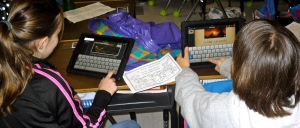 Our Final step in the jigsaw was to have every student teach his or her story to a small group. I had the kids break out into seven groups (not all of the groups had a representative from every story). It was wonderful to see the students teaching each other and engaged in conversation surrounding their myth. As we came back together as a group I asked the class who in their small group had the best presentation and why? The students responded with very astute answers. “I think Lelah had a great presentation because she put a lot of effort into it, her lesson was easy to understand, and she had great illustrations.” Another student added, “Yeah, I agree Logan’s presentation was the best in our group because his pictures brought the story to life.”
Our Final step in the jigsaw was to have every student teach his or her story to a small group. I had the kids break out into seven groups (not all of the groups had a representative from every story). It was wonderful to see the students teaching each other and engaged in conversation surrounding their myth. As we came back together as a group I asked the class who in their small group had the best presentation and why? The students responded with very astute answers. “I think Lelah had a great presentation because she put a lot of effort into it, her lesson was easy to understand, and she had great illustrations.” Another student added, “Yeah, I agree Logan’s presentation was the best in our group because his pictures brought the story to life.”
All in all, I think my class had a fantastic morning, and the best part was the students were the ones doing all of the teaching and work!
